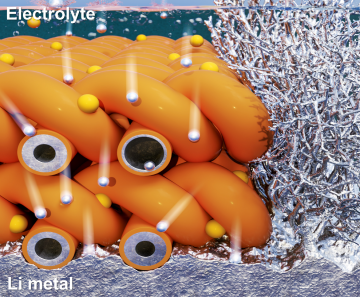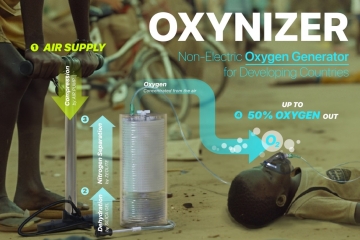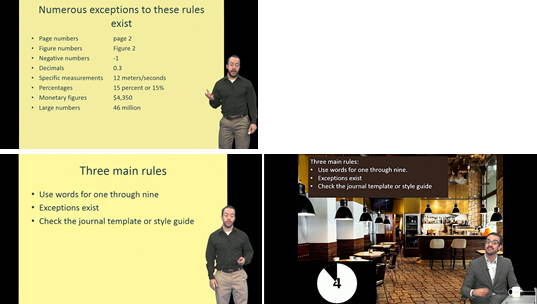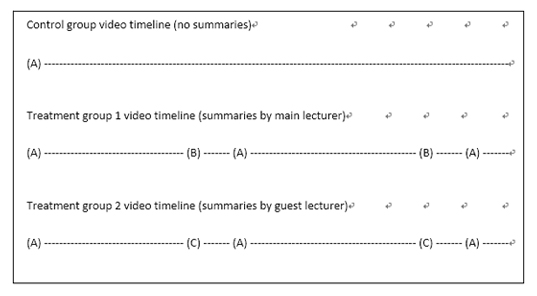KAIST
BREAKTHROUGHS
Research Webzine of the KAIST College of Engineering since 2014
Spring 2025 Vol. 24Pinch hitter: Summaries and visual diversity in video lectures
With the rise of MOOCs, flipped classrooms, and other e-learning contexts, improving the effectiveness of online lecture videos is a crucial objective. A recent study at KAIST suggests that instructors can improve student recall of video content in e-learning contexts by simply recording short summaries and splicing those into existing videos, although interestingly, this benefit was not observed with summaries delivered by a guest lecturer in a less formal scene.
Article | Spring 2018
Online videos are becoming an increasingly visible component of the modern classroom. This is certainly true at KAIST, as an increasing number of courses in the College of Engineering are given in Education 3.0 format. In this format, lectures are delivered via online video and class time is used for collaborative task-based activities that reinforce the video contents. Considering the proliferation of video instruction in flipped and online engineering courses, understanding how videos can be improved will enable more effective instruction.
In a recent study conducted at KAIST, a research team consisting of Mik Fanguy and Matthew Baldwin at KAIST, and Jamie Costley at Kongju National University examined methods of improving video lectures. Specifically, they were interested in the effects of the inclusion of mid- and end-point summaries of video content, and whether those summaries would lead students to greater retention of the contents. The study also investigated whether a guest lecturer delivering the summaries would help to draw students’ attention to the summaries, which would lead to higher levels of student retention of content.
Participants were drawn from a required technical writing course taught in a flipped learning format for graduate engineering students at KAIST. The participants were divided into three groups. The control group featured a lecturer speaking with slides in the background. The summaries only group viewed the same videos as those of the control, with the addition of summaries spliced into the middles and ends of the videos. These summaries in the summaries only group were delivered by the same lecturers of the original video with the same slides. The guest lecturer group viewed the same videos as the control, but with the addition of summaries respectively spliced into the middles and ends of the videos. These summaries were delivered by a guest lecturer who appeared in a less formal coffee shop scene. After watching the videos, student recall was measured using multiple-choice quizzes.
The summaries only group significantly outperformed the other two groups, scoring an average of nearly 10% higher on the two quizzes than the participants in the control and the guest lecturer groups. Furthermore, no significant difference was found between the performances of the control and the guest lecturer groups. Much of the literature on online lecture videos suggests that increasing the amount of media diversity and change-of-pace elements helps improve student attention and recall of contents. Therefore, the fact that the guest lecturer condition did not perform as well as the summaries only group is surprising. It is possible, that the introduction of a guest lecturer or a rapid scene change may distract students, nullifying the benefit of the summaries.
One student in the guest lecture group seemed to confirm this in an interview, stating, “The summaries cut the flow of the lecture. I was focused on the [content] of the video but the change of professor and background made it more difficult to follow.”
Mik Fanguy described the implications of the findings as follows: “The results suggest that simply splicing in 30-second summaries into existing videos can improve student recall of those contents. Even though many studies have suggested that increasing the number of change-of-pace elements in videos increases student recall, instructors should also bear in mind such elements can also become distractions that eventually negate the benefits they are expected to provide.”
The study indicates that a small but important change to existing videos will enable educators to provide more effective video instruction. It is hoped that these findings will lead to improved instruction and increased retention of course contents across the College of Engineering at KAIST.
The authors published this research in the November 2017 issue of The International Review of Research in Open and Distributed Learning.
Original article: http://www.irrodl.org/index.php/irrodl/article/view/3208/4435
 For audio interview on the KAIST Podcast, please click here: http://www.kaist.ac.kr/Upl/downfile/S08E11_20171218.mp3
For audio interview on the KAIST Podcast, please click here: http://www.kaist.ac.kr/Upl/downfile/S08E11_20171218.mp3
Most Popular

When and why do graph neural networks become powerful?
Read more
Smart Warnings: LLM-enabled personalized driver assistance
Read more
Extending the lifespan of next-generation lithium metal batteries with water
Read more
Professor Ki-Uk Kyung’s research team develops soft shape-morphing actuator capable of rapid 3D transformations
Read more
Oxynizer: Non-electric oxygen generator for developing countries
Read more

